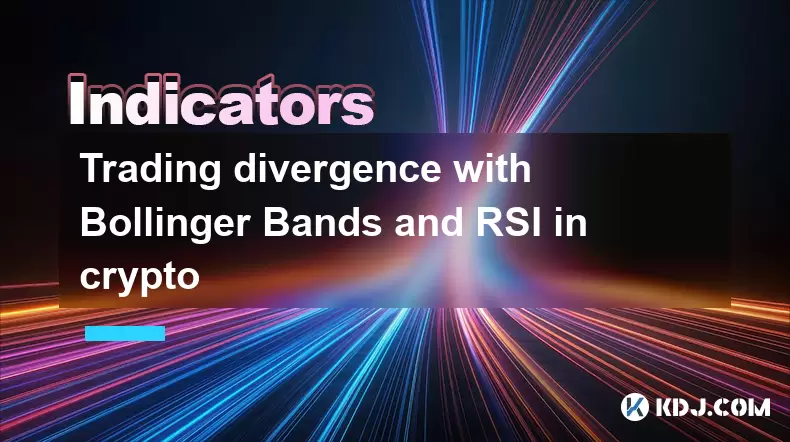-
 Bitcoin
Bitcoin $117,953.1650
-0.44% -
 Ethereum
Ethereum $3,404.6769
7.20% -
 XRP
XRP $3.2145
7.63% -
 Tether USDt
Tether USDt $1.0001
0.01% -
 BNB
BNB $717.7875
3.79% -
 Solana
Solana $175.1351
5.00% -
 USDC
USDC $0.9997
-0.02% -
 Dogecoin
Dogecoin $0.2140
6.36% -
 TRON
TRON $0.3125
3.78% -
 Cardano
Cardano $0.7984
6.61% -
 Hyperliquid
Hyperliquid $46.3875
-2.89% -
 Stellar
Stellar $0.4661
-1.97% -
 Sui
Sui $3.9769
-0.95% -
 Chainlink
Chainlink $17.0299
3.26% -
 Hedera
Hedera $0.2442
2.02% -
 Bitcoin Cash
Bitcoin Cash $494.1589
-0.49% -
 Avalanche
Avalanche $22.7305
3.32% -
 Shiba Inu
Shiba Inu $0.0...01429
3.24% -
 UNUS SED LEO
UNUS SED LEO $8.8207
-0.20% -
 Toncoin
Toncoin $3.2223
3.73% -
 Litecoin
Litecoin $99.4978
2.54% -
 Polkadot
Polkadot $4.1940
2.13% -
 Monero
Monero $341.6175
2.76% -
 Pepe
Pepe $0.0...01357
4.19% -
 Uniswap
Uniswap $8.8637
-2.74% -
 Bitget Token
Bitget Token $4.7017
0.48% -
 Dai
Dai $0.9998
-0.03% -
 Ethena USDe
Ethena USDe $1.0003
-0.04% -
 Aave
Aave $320.8518
-2.86% -
 Bittensor
Bittensor $428.9747
-1.94%
Trading divergence with Bollinger Bands and RSI in crypto
Traders can spot potential crypto reversals by combining Bollinger Bands and RSI to identify bullish or bearish divergence signals.
Jul 15, 2025 at 04:50 pm

Understanding Divergence in Cryptocurrency Trading
Divergence is a powerful concept in technical analysis that occurs when the price of an asset moves in one direction while a technical indicator moves in the opposite direction. In crypto trading, this often signals a potential reversal or weakening momentum. Bollinger Bands and Relative Strength Index (RSI) are two widely used tools that, when combined, can offer traders strong signals about divergences in the market.
When analyzing divergence, traders must be able to distinguish between regular divergence and hidden divergence. Regular divergence indicates a possible trend reversal, whereas hidden divergence suggests the continuation of the current trend. Both types can be effectively identified using RSI and Bollinger Bands together.
How Bollinger Bands Work in Crypto Markets
Bollinger Bands consist of three lines: a simple moving average (SMA) in the center, with upper and lower bands calculated based on standard deviations from that SMA. These bands dynamically adjust to market volatility, expanding during high volatility and contracting during low volatility.
In crypto markets, where price swings are frequent and sometimes extreme, Bollinger Bands help traders identify overbought and oversold conditions. When the price touches or moves beyond the upper band, it may indicate overbought territory, suggesting a potential bearish reversal. Conversely, when the price touches or drops below the lower band, it might signal oversold conditions and a bullish reversal.
However, it's crucial not to make decisions solely based on price touching the bands. Instead, combining them with other indicators like RSI enhances their predictive power, especially when looking for divergence signals.
Leveraging RSI for Identifying Divergence
The Relative Strength Index (RSI) is a momentum oscillator that measures the speed and change of price movements. It typically ranges from 0 to 100 and is used to identify overbought (>70) and oversold (<30) conditions. However, its real strength lies in detecting divergence patterns.
For example, if Bitcoin’s price makes a new high but the RSI fails to surpass its previous high, this forms a bearish regular divergence, signaling weakening upward momentum. Similarly, if the price hits a new low but RSI doesn't reach a new low, it creates a bullish regular divergence, indicating potential strength.
Traders should visually compare the price chart and RSI line to spot these discrepancies. This becomes even more effective when combined with Bollinger Bands, as they provide context on volatility and price extremes.
Combining Bollinger Bands and RSI for Divergence Signals
To trade divergence using both Bollinger Bands and RSI, follow these steps:
- Monitor price action alongside Bollinger Bands to observe how the price interacts with the bands.
- Simultaneously track the RSI indicator to compare momentum highs and lows against price peaks and troughs.
- Look for situations where the price makes a higher high but RSI makes a lower high — a sign of bearish divergence.
- Identify cases where the price makes a lower low but RSI makes a higher low — a sign of bullish divergence.
- Confirm divergence by checking whether the price is near the outer Bollinger Band, which adds weight to the signal.
By integrating both tools, traders gain a more comprehensive view of potential reversals. For instance, if Ethereum’s price reaches the upper Bollinger Band while RSI shows a bearish divergence, it could be a strong indication of an imminent pullback.
It's also important to use candlestick patterns or volume indicators to further validate these signals before entering a trade.
Executing Trades Based on Confirmed Divergence Patterns
Once a divergence pattern is confirmed using both Bollinger Bands and RSI, traders can proceed to execute trades with defined entry, stop-loss, and take-profit levels.
- Enter a sell position when a bearish divergence is confirmed, especially if the price is at or above the upper Bollinger Band.
- Enter a buy position when a bullish divergence is confirmed, particularly if the price is at or below the lower Bollinger Band.
- Place a stop-loss order slightly beyond the recent swing high or low to manage risk.
- Set a take-profit level based on prior support/resistance zones or Fibonacci retracement levels.
Timing is critical. Entering too early may result in false signals, while waiting too long could cause missed opportunities. Using a smaller time frame chart (e.g., 15-minute or 1-hour) to zoom in on the divergence confirmation helps improve precision.
Moreover, traders should avoid trading every single divergence signal. Filtering signals with additional tools such as moving averages or volume spikes increases the probability of successful trades.
Frequently Asked Questions
Q: Can Bollinger Bands alone confirm divergence?
A: No, Bollinger Bands primarily show volatility and price extremes. To confirm divergence, they need to be paired with a momentum indicator like RSI or MACD.
Q: How reliable is RSI divergence in highly volatile crypto markets?
A: While RSI divergence is a strong signal, it can produce false positives in extremely volatile conditions. Combining it with Bollinger Bands improves accuracy by providing volatility context.
Q: Should I use default settings for Bollinger Bands and RSI when trading crypto?
A: The default settings (20-period SMA for Bollinger Bands and 14 for RSI) are a good starting point, but some traders adjust them based on the specific cryptocurrency and time frame being analyzed.
Q: Is divergence more effective in trending or ranging crypto markets?
A: Divergence works well in both environments. In trending markets, it can warn of exhaustion, while in ranging markets, it often highlights turning points at support and resistance levels.
Disclaimer:info@kdj.com
The information provided is not trading advice. kdj.com does not assume any responsibility for any investments made based on the information provided in this article. Cryptocurrencies are highly volatile and it is highly recommended that you invest with caution after thorough research!
If you believe that the content used on this website infringes your copyright, please contact us immediately (info@kdj.com) and we will delete it promptly.
- C2 Blockchain, DOG Coins, and Acquisition: A Meme-Native Bitcoin Asset
- 2025-07-17 20:30:12
- DeFi Evolution: Hyperion, HYPE Token, and the Hyperliquid Ecosystem
- 2025-07-17 21:30:12
- BlockDAG's NO VESTING PASS: A Crypto Game Changer Amid CRO & ONDO Swings
- 2025-07-17 21:30:12
- Ethereum, Pepe, Crypto: Navigating the Wild West of Digital Assets
- 2025-07-17 20:30:12
- Ethereum ETF Skyrockets: Record-Breaking Inflows Signal Bullish Trend
- 2025-07-17 22:10:12
- SOL, Bounce, Trap: Decoding Crypto's Latest Moves
- 2025-07-17 22:10:12
Related knowledge

Advanced RSI strategies for crypto
Jul 13,2025 at 11:01am
Understanding the Basics of RSI in Cryptocurrency TradingThe Relative Strength Index (RSI) is a momentum oscillator used to measure the speed and chan...

Crypto RSI for day trading
Jul 12,2025 at 11:14am
Understanding RSI in the Context of Cryptocurrency TradingThe Relative Strength Index (RSI) is a momentum oscillator used to measure the speed and cha...

Crypto RSI for scalping
Jul 12,2025 at 11:00pm
Understanding RSI in the Context of Crypto TradingThe Relative Strength Index (RSI) is a momentum oscillator widely used by traders to measure the spe...

What does an RSI of 30 mean in crypto
Jul 15,2025 at 07:07pm
Understanding RSI in Cryptocurrency TradingRelative Strength Index (RSI) is a momentum oscillator widely used in cryptocurrency trading to measure the...

What does an RSI of 70 mean in crypto
Jul 13,2025 at 06:07pm
Understanding the RSI Indicator in Cryptocurrency TradingThe Relative Strength Index (RSI) is a widely used technical analysis tool that helps traders...

Does RSI work in a bear market for crypto
Jul 16,2025 at 01:36pm
Understanding RSI in Cryptocurrency TradingThe Relative Strength Index (RSI) is a momentum oscillator used by traders to measure the speed and change ...

Advanced RSI strategies for crypto
Jul 13,2025 at 11:01am
Understanding the Basics of RSI in Cryptocurrency TradingThe Relative Strength Index (RSI) is a momentum oscillator used to measure the speed and chan...

Crypto RSI for day trading
Jul 12,2025 at 11:14am
Understanding RSI in the Context of Cryptocurrency TradingThe Relative Strength Index (RSI) is a momentum oscillator used to measure the speed and cha...

Crypto RSI for scalping
Jul 12,2025 at 11:00pm
Understanding RSI in the Context of Crypto TradingThe Relative Strength Index (RSI) is a momentum oscillator widely used by traders to measure the spe...

What does an RSI of 30 mean in crypto
Jul 15,2025 at 07:07pm
Understanding RSI in Cryptocurrency TradingRelative Strength Index (RSI) is a momentum oscillator widely used in cryptocurrency trading to measure the...

What does an RSI of 70 mean in crypto
Jul 13,2025 at 06:07pm
Understanding the RSI Indicator in Cryptocurrency TradingThe Relative Strength Index (RSI) is a widely used technical analysis tool that helps traders...

Does RSI work in a bear market for crypto
Jul 16,2025 at 01:36pm
Understanding RSI in Cryptocurrency TradingThe Relative Strength Index (RSI) is a momentum oscillator used by traders to measure the speed and change ...
See all articles

























































































